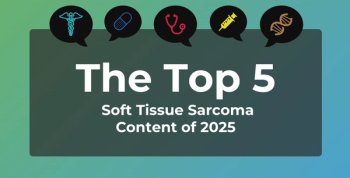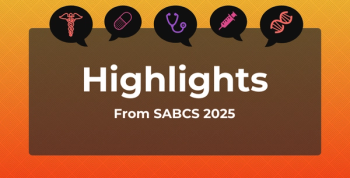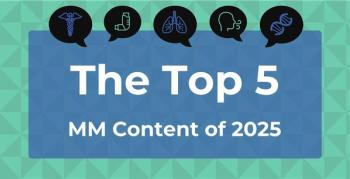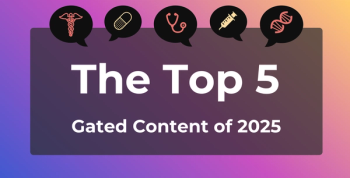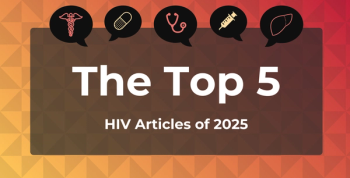
Zongertinib Shows Durable Responses With No Interstitial Lung Disease in HER2-Mutated Advanced NSCLC
Key Takeaways
- Zongertinib showed a 71% overall response rate and 93% disease control rate in HER2-mutated NSCLC patients, with a median PFS of 12.4 months.
- No cases of interstitial lung disease were reported, even in patients previously treated with trastuzumab deruxtecan, highlighting a significant safety advantage.
Results could give patients with HER2-mutated non–small cell lung cancer (NSCLC) an oral therapy option.
Zongertinib, an oral therapy shown to have strong responses in patients previously treated for HER2-mutated non–small cell lung cancer (NSCLC), yielded durable responses with a highly manageable safety profile in results presented Monday at the American Association for Cancer Research (AACR) annual meeting in Chicago.1
The study, Beamion LUNG-1, simultaneously appeared in the New England Journal of Medicine (NEJM).2
“It's very exciting for the first time to have an oral drug where the majority of patients are responding.,” lead study author John V. Heymach, MD, PhD, chair of thoracic/head and neck medical oncology at The University of Texas MD Anderson Cancer Center, said in an interview with The American Journal of Managed Care®.
“They're having durable responses, and the toxicity for this drug is very limited; the safety profile is very manageable. Patients are really doing quite well on the drug.”
In December,
Zongertinib is an irreversible tyrosine kinase inhibitor (TKI) that works by selectively blocking HER2 while sparing wild-type EGFR, thus reducing toxicity. HER2 alterations affect between 2% and 4% of patients with NSCLC.
Results presented Monday include the following patient groups:
- Cohort 1: Those with advanced HER2-mutated NSCLC within the tyrosine kinase domain (TKD), who were initially randomly assigned to receive doses of 120 mg or 240 mg once daily;
- Cohort 5: Those with advanced HER2-mutated NSCLC tumors harboring a mutation in the TKD previously treated with a HER2-directed antibody-drug conjugate, who were initially given doses of 240 mg once daily; and
- Cohort 3: This exploratory group with advanced HER2-mutated NSCLC tumors harbored a mutation outside the TKD domain; they were also initially given doses of 240 mg daily.
Following the interim analysis of cohort 1, all new patients in the study received the 120 mg dose, as patients at the higher dose experienced more AEs and dose interruptions. The primary end point was objective response; in the first 2 groups, this was assessed by blinded independent central review, and the last group was assessed by investigator review. Secondary end points were PFS and DoR.
Results. Between March 8, 2023, and November 29, 2024, investigators treated 132 patients in cohort 1, 39 patients in cohort 5, and 25 patients in cohort 3. Results were as follows:
- Cohort 1: 71% of 75 patients receiving the 120 mg dose had a confirmed objective response (95% CI, 60 to 80; P < .001), with a median DOR of 14.1 months (95% CI, 6.9 to not evaluable), and median PFS of 12.4 months (95% CI, 8.2 to not evaluable). Grade 3 or higher AEs were seen in 13 patients (17%). In cohort 1, 7% of patients had a complete response, 64% had a partial response, and the disease control rate was 96%.
- In addition, zongertinib at 120 mg had intracranial activity in 27 patients from cohort 1 with brain metastases, with 41% achieving response and 81% seeing disease control.
- Cohort 5: 48% of 31 patients at 120 mg had a confirmed objective response (95% CI, 32 to 65). Grade 3 or higher AEs occurred in 1 patient (3%).
- Cohort 3: 30% of 20 patients at 120 mg had a confirmed objective response (95% CI, 15 to 52). Grade 3 or higher AEs were seen in 5 patients (25%).
- Across all 3 cohorts, there were no cases of drug-related ILD.
Within cohort 1, stronger objective response rates were seen among current or former smokers than nonsmokers, and higher rates were seen among men compared with women. Trial enrollment was 53% Asian, 32% White, and 15% with no race reported. Stronger objective response rates were seen among non-Asian patients.
The new results break new ground in many ways. According to Boehringer Ingelheim, developer of zongertinib, the data presented at AACR represent “the largest known dataset of patients with previously treated advanced NSCLC who have HER2 mutations outside the TKD.”
Heymach said that both response rates and PFS seen in Beamion LUNG-1 exceeded those seen in other TKI trials; PFS was typically “in the range of 2 to 5 months,” with response rates at 20% to 30%.
In addition, results show patients who previously had limited treatment choices could soon have a new, oral option, which Heymach said could improve quality of life for patients vulnerable to infection.
Finally, the lack of ILD in all patient cohorts, including those previously treated with trastuzumab deruxtecan, is an important safety development. “These drugs often have ILD or interstitial lung disease as a side effect,” and for this reason, investigators were careful about which patients enrolled, “to make sure they didn’t have any preexisting lung issues.
“Well, lung cancer patients have a lot of preexisting lung issues,” he said. “And so having an option that has no appreciable risk that we’ve seen so far of interstitial lung disease is an important thing for these patients.”
Heymach also took note of the data for activity on brain metastases, which are common in NSCLC. “I've had a number of patients myself who've done very well, whose brain tumors responded to this drug,” he said.
Reactions. At a press conference, moderator Jayesh Desai, MBBS, FRACP, medical oncologist and associate director, Clinical Research, Peter MacCallum Cancer Centre in Victoria, Australia, called the results “extraordinary.”
HER2, he said, was an early but very challenging molecular target. “To have made such a leap at this point in time, given the complexity of targeting HER2 mutations—the data speaks for itself.”
Desai asked how zongertinib might be used going forward. Heymach said although the 12.4 month PFS is impressive, “ultimately, of course, we want to move up the bar.”
It is possible, he said, that the targeted therapy could be used alongside an ADC, or perhaps combined with chemotherapy, similar to the
“So, we’re excited to see the performance in monotherapy,” Heymach said. “But moving forward, I anticipate that combinations are going to play an important role.”
FDA granted Priority Review to zongertinib in February 2025, and the phase 3 Beamion LUNG-2 trial (NCT06151574), which will study zongertinib in frontline treatment, is enrolling patients.
With a frontline trial of trastuzumab dertuxtecan also ongoing in HER2-mutated NSCLC, discussant Charles M. Rudin, MD, PhD, of Memorial Sloan Kettering Cancer Center, said, "The most important question, in my opinion, is which of these should we give first line?"
He noted that other highly specific TKIs are in the pipeline to compete with zongertinib. "There's a basic oncologic principle, which is, we always give our best therapies first," Rudin said. "These agents have higher response rates and greater durability than chemo or chemo-IO, they should be first."
References
- Heymach JV, Ruiter G, Ahn MJ. Zongertinib in patients with pretreated HER2-mutant advanced NSCLC: Beamion LUNG-1. Presented at: American Association for Cancer Research 2025 Annual Meeting; April 25-30, 2025; Chicago, IL. Presentation CT050.
- Heymach JV, Ruiter G, Ahn MJ. Zongertinib in previously treated HER2-mutant non–small cell lung cancer. N Engl J Med. Published online April 28, 2025. doi:10.1056/NEJMoa2503704
Newsletter
Stay ahead of policy, cost, and value—subscribe to AJMC for expert insights at the intersection of clinical care and health economics.

